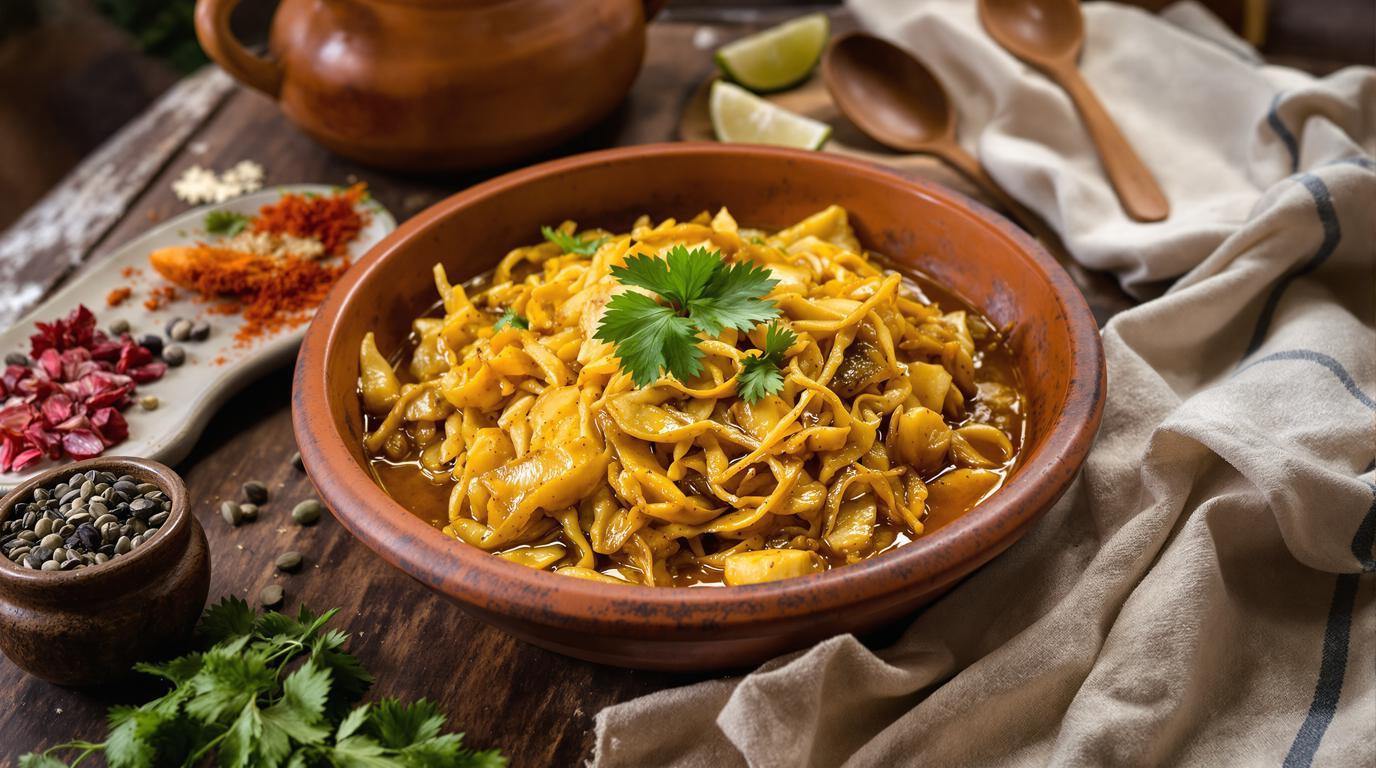The first time I encountered a recipe for banana peel cuisine, I was skeptical at best. Growing up in a household where my grandmother insisted nothing go to waste, I’d seen many creative reuses of food scraps – but cooking with banana peels? That seemed a bridge too far. Yet after traveling through South Asia and witnessing the incredible transformation these humble peels undergo in skilled hands, I became a convert. What follows is perhaps the most surprising zero-waste recipe in my repertoire – a rich, flavorful stew that turns discarded peels into something genuinely delicious.
The Art of Banana Peel Subzi
Long before “zero-waste cooking” became trendy, home cooks across South Asia were transforming banana peels into savory, spiced subzi (stew). This practice emerged from Depression-era necessity and cultural ingenuity, creating a dish that’s simultaneously humble and extraordinary. The secret lies in proper blanching – a technique that removes bitterness while preserving texture, allowing the peels to absorb rich spices and develop a surprisingly meaty quality.
I’ve refined this recipe through years of kitchen experimentation, balancing traditional methods with modern tastes. The result honors both culinary heritage and practical sustainability. For those willing to venture beyond conventional ingredients, it offers a remarkable reward.
Essential Ingredients
The foundation of this dish requires careful selection of banana peels. Look specifically for yellow bananas with slight green tips – fully ripe or overripe peels become too bitter when cooked. The spice profile balances warming spices with bright citrus notes that counter the peels’ natural earthiness.
- 6 banana peels (from yellow bananas with slight green tips)
- 4 cups (950ml) water for blanching
- 2 tablespoons (30ml) grapeseed or mustard oil
- 1 small onion, finely diced (about 1 cup/150g)
- 2 garlic cloves, minced (about 1 tablespoon/10g)
- 1 jalapeño, seeded and finely chopped (about 2 tablespoons/30g)
- 1 tablespoon (5g) dried oregano
- 1 teaspoon (2g) ground cumin
- 1 teaspoon (2g) freshly ground black pepper
- 2 tablespoons (30ml) freshly squeezed orange juice
- 2 tablespoons (30ml) soy sauce (optional but recommended)
The Transformation Process
The magic of this dish lies in proper preparation of the peels. Each step builds toward transforming what most discard into something truly delightful:
- Prep the peels: Before cooking, wash peels thoroughly in a 1:3 vinegar-water solution to remove any pesticide residue. This step is non-negotiable.
- Blanch properly: Bring water to a rolling boil, add peels, and blanch for exactly 10 minutes. This removes bitterness while maintaining structural integrity.
- Process for texture: Once blanched and cooled, use a spoon to gently scrape away the soft white inner layer, leaving the firmer outer peel. Shred into thin strips with a fork.
- Build flavor base: Heat oil in a heavy-bottomed pan over medium heat. Add onions and cook until translucent (about 3 minutes), then add garlic and jalapeño, cooking until fragrant (30 seconds).
- Introduce spices: Add oregano, cumin, and black pepper, stirring constantly for 30 seconds to bloom the spices without burning.
- Incorporate peels: Add shredded peels to the spice mixture, stirring thoroughly to ensure even coating. This critical step allows the peels to absorb flavor.
- Deglaze: Add orange juice and optional soy sauce, scraping any browned bits from the pan bottom.
- Simmer: Reduce heat to medium-low and cook, stirring occasionally, for 25-30 minutes until peels are tender and flavors meld.
Chef’s Note: The texture transformation is remarkable – properly prepared peels develop a tender, almost meaty quality reminiscent of young jackfruit. If you’re skeptical, try a small batch first. Most converts are won over after the first taste. For a creamier version, add 1/3 cup coconut milk during the final 5 minutes of cooking.
Serving Suggestions & Modern Applications
Serve this subzi hot with steamed basmati rice or fresh roti for an authentic experience. A side of cooling raita (yogurt with cucumber and mint) provides the perfect temperature and flavor contrast. For wine enthusiasts, a crisp Sauvignon Blanc beautifully complements the dish’s spice and citrus notes.
Interestingly, the same blanching process that makes banana peels palatable for cooking has sparked a parallel trend in natural skincare. The antioxidant-rich blanched peels can be pureed with ingredients like flaxseed oil and vitamin E to create exfoliating masks. While I’ll always prioritize culinary applications, it’s fascinating to see how traditional preservation techniques find new relevance in contemporary wellness practices.
Whether you approach this recipe as a culinary adventure, a sustainability practice, or simply a way to honor traditional wisdom, it offers a profound reminder: in skilled hands, even the most overlooked ingredients can become extraordinary. Just as my grandmother taught me decades ago, true cooking mastery isn’t about expensive ingredients—it’s about imagination, respect for tradition, and the willingness to find value where others see waste. Discover more banana peel magic here or try my Depression-era banana bread for another delicious way to minimize waste.
